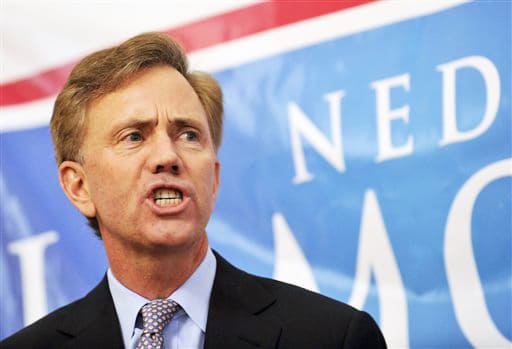
Gov. Ned Lamont has set a bold new goal for the state: to eliminate Connecticut’s dependence on fossil fuels by 2040.
The governor put forward this goal in his third executive order since taking office in January, which he signed at a climate forum in Hartford on Tuesday. The executive order also expanded the responsibilities and size of the Governor’s Council on Climate Change, which was established under Lamont’s predecessor, Gov. Dannel Malloy.
“Climate change is happening faster than we thought, and it’s impacting us in significant ways as a state,” Lamont said at the climate forum. “Connecticut will continue to be a national leader on climate action.”
The Governor’s Council on Climate Change, known as the GC3, was created in 2015 by executive order and is tasked with formulating strategies to help the state meet the goals of the Connecticut General Assembly’s 2008 Global Warming Solutions Act and the 2018 Act Concerning Climate Change Planning and Resiliency. The first act set out to reduce greenhouse gas emissions to 10 percent below 1990 levels by January 2020 and to 80 percent below 2001 levels by January 2050, while the second act aimed to reduce greenhouse gas emissions by 45 percent from a 2001 baseline by 2030, based on a GC3 recommendation.
In December 2018, the council presented a report to the governor with their proposed solutions, which include plans for building clean and resilient infrastructure and expanding clean transportation.
According to the newest executive order, the committee will now also be responsible for monitoring the execution of its proposed strategies and will submit a report to the administration on its implementation progress by Jan. 15, 2021.
The GC3 will also be required to develop a climate adaptation strategy in consultation with every state agency to prepare every facet of Connecticut’s economy and public services for the effects of climate change. To do so, the executive order added several seats to the council to represent the voices of municipal government, state agencies and affordability and environmental justice advocates, as appointed by the governor.
Most notably, the executive order requires the Department of Energy and Environmental Protection to develop strategies to achieve “a 100 percent zero carbon target for the electric sector by 2040,” going beyond what the CGA previously set out as a goal.
“By signing this executive order, Governor Lamont ensures Connecticut will have tools to plan for and address impacts like sea level rise and flooding, extreme heat events and changes to ecosystems and habitats throughout the state,” DEEP Commissioner Katie Dykes said in a press release on Tuesday. “By incorporating resilience into our planning practices, and charting a path to a 100 percent clean electric grid, we can provide safety and security for future generations.”
Environmental advocates commended parts of the executive order, but some worried that the Lamont administration is not going far enough to combat climate change.
Samantha Dynowski of the Connecticut chapter of the Sierra Club called the order a “positive step” but deemed the state’s overall environmental response “lackluster.”
“There are a number of steps we can take,” Dynowski told the News. “They’re straightforward as long as the state is willing.”
In particular, she criticized the state’s support for a new natural gas power plant in Killingly — a move that would release methane and an estimated two million tons of carbon dioxide yearly into the atmosphere. If such a plant opened now, Dynowski said, the state would not meet the new 100 percent clean energy goal.
Nevertheless, Yale Student Environmental Coalition co-president Katie Schlick ’21 applauded the new administration’s commitment to combating climate change.
“I’m very excited that Connecticut has stepped up to the plate,” Schlick said. “[Lamont] believes that a clean energy economy is a good economy, and Connecticut’s been lacking in that in the past.”
According to an August 2019 report from the Council on Environmental Quality, climate change could overturn much of the environmental progress Connecticut has made, including its work to reduce sewage treatment plant nitrogen discharges into the Long Island Sound and efforts to protect its native plants and animals.
YSEC co-president Zander De Jesus ‘20 highlighted the role that young people, working people and people of color have played in pushing for environmental reform.
“Oftentimes, the most vulnerable communities are lower-income and disproportionately people of color,” De Jesus said. “Times are very urgent, and every moment counts.”
Lamont’s first executive order directed state office buildings and vehicle fleets to become more energy efficient through a “Lead By Example” sustainability initiative.
Nathalie Bussemaker | nathalie.bussemaker@yale.edu







